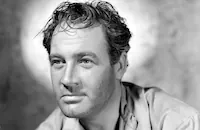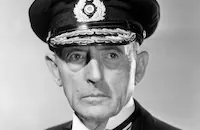Stolen Holiday

Brief Synopsis
Cast & Crew
Michael Curtiz
Kay Francis
Claude Rains
Ian Hunter
Alison Skipworth
Alexander D'arcy
Film Details
Technical Specs

Synopsis
Nicole Picot, a mannequin in a Paris dress shop, has ambitions of being a designer herself, and when she is chosen by Stefan Orloff to accompany him to an elegant soiree, Nicole believes she finally has the chance to break into French society. Instead, it turns out that Stefan is an equally ambitious but penniless Russian adventurer, who is trying to raise money for an investment scheme. They become partners, and within a few years, Nicole is a successful designer, the head of the House of Picot, with only her old dresser, Suzanne, to remind her of the past. Nicole has resisted marrying Stefan, and when she meets Tony Wayne, a handsome British diplomat, it is clear why. Nicole and Tony fall deeply in love, but when Stefan asks her to marry him in order to help save his current schemes, she agrees. Just after the wedding, Francis Chalon, one of Stefan's partners, is arrested. Stefan runs away, but Nicole insists on staying. When news of Stefan's involvement in a swindle breaks, a mob attacks Nicole's shop, completely ruining it. Tony comes to her aid, and Nicole admits that she loves him, but says that she is going to Stefan anyway. She joins Stefan in his hideout, where she accuses him of dishonesty and cowardice. While they talk, Stefan sees the police surrounding the house and sneaks out. The police shoot him, but make it look like suicide. Nicole sells her business to help pay some of Stefan's debts. When Tony begs her to marry him, she protests that the scandal will ruin him, but he insists that he will brave any difficulty, and finally, she agrees.

Director

Michael Curtiz
Cast

Kay Francis

Claude Rains

Ian Hunter

Alison Skipworth

Alexander D'arcy
Betty Lawford

Walter Kingsford

Charles Halton

Frank Reicher

Frank Conroy
Egon Brecher
Robert Strange
Kathleen Howard
Wedgewood Nowell
Crew
Wesley Anderson
Harry Joe Brown
Paul Burnett
Warren Duff
Ruby Felker
Robert Fellows
Leo F. Forbstein
John Gates
Ida Greenfield
Anton Grot
Sid Hickox
Fred Jackman
Stanley Jones
Virginia Kellogg
Frank Kowalski
Vernon Lawson
Stanley Logan
Mickey Marigold
L. P. "dudie" Mashmeyer
Terry Morse
Orry-kelly
Herbert Plews
Casey Robinson
Ray Romero
Sherry Shourds
Henry West

Film Details
Technical Specs

Articles
Stolen Holiday
Warner Bros. made a point to put a disclaimer at the beginning of the film saying that the characters and events in Stolen Holiday were fictitious. However, the story was clearly based on a real-life French financial scandal known as the Stavisky Affair in the early 1930s. Serge Stavisky was a Russian con artist living in France who sold worthless bonds and operated throughout the highest levels of French society and government. Stavisky was married to the beautiful former Chanel model Arlette Simon, who was the basis for the Kay Francis character in Stolen Holiday. In 1934 Stavisky went on the run when his scam was discovered, and the ensuing scandal had major political ramifications and resulted in several deaths.
Stolen Holiday was mainly a star vehicle for actress Kay Francis, who was at the height of her popularity at Warner Bros. when the film was made. Francis's statuesque figure and striking dark beauty perfectly suited her to the role of the elegant Nicole Picot. Playing a model and designer also gave Francis the opportunity to show off many exquisite fashions designed for her by Orry-Kelly. Stolen Holiday was Francis's fourth and final film under the direction of Michael Curtiz. The film was also one of several in which she co-starred with actor Ian Hunter, but it marked the only time she co-starred with Claude Rains.
Stolen Holiday is also notable because it was the first time that Claude Rains and Michael Curtiz ever worked together. It was the beginning of a long and successful series of collaborations between the two that ultimately produced eleven films in total including the 1942 classic Casablanca.
Part drama, part romance and part haute couture fashion show, Stolen Holiday has something to please everyone. "It is the production values, the unusually good dialog and the superiority of the cast," said the Variety review, "which combine to raise the picture to where it is more than ordinarily entertaining...The star and (Ian) Hunter are opposite each other for the third time. A good combination. Rains gives the swindler-romancer a high polish. Comedy is derived largely from Alison Skipworth, who is excellent as Miss Francis' friend and advisor." The New York Times said, "If the picture is at all distinguished, it is because Claude Rains does a superb job with the character whom the film's producers would have you believe is not patterned after the late M. Serge Alexandre Stavinsky; and...Kay Francis parades the most striking wardrobe that Hollywood's couturiers can conceive in the Paris manner."
Director: Michael Curtiz
Screenplay: Casey Robinson
Cinematography: Sid Hickox
Art Direction: Anton Grot
Music: Werner R. Heymann (stock music, uncredited)
Film Editing: Terry Morse
Cast: Kay Francis (Nicole 'Nicky' Picot), Claude Rains (Stefan Orloff), Ian Hunter (Anthony 'Tony' Wayne), Alison Skipworth (Suzanne, Nicole's Assistant and Friend), Alexander D'Arcy (Leon Anatole, Orloff's Assistant), Betty Lawford (Helen Tuttle), Walter Kingsford (Francis Chalon, Publisher).
BW-80m. Closed Captioning.
by Andrea Passafiume

Stolen Holiday
Quotes
Trivia
The movie is loosely based on the French bond scandal involving Serge Alexandre Stavisky. After the fraud was discovered he either committed suicide or was murdered by the French police.
Notes
The film's working title was Mistress of Fashion. Some scenes were shot on location at Lake Arrowhead. The story was loosely based on the French bond scandal involving the Russian emigré Serge Alexandre Stavisky who, after the fraud was discovered, either committed suicide or was murdered in 1934. Alain Resnais directed a French film based on the scandal entitled Stavisky in 1974.
















